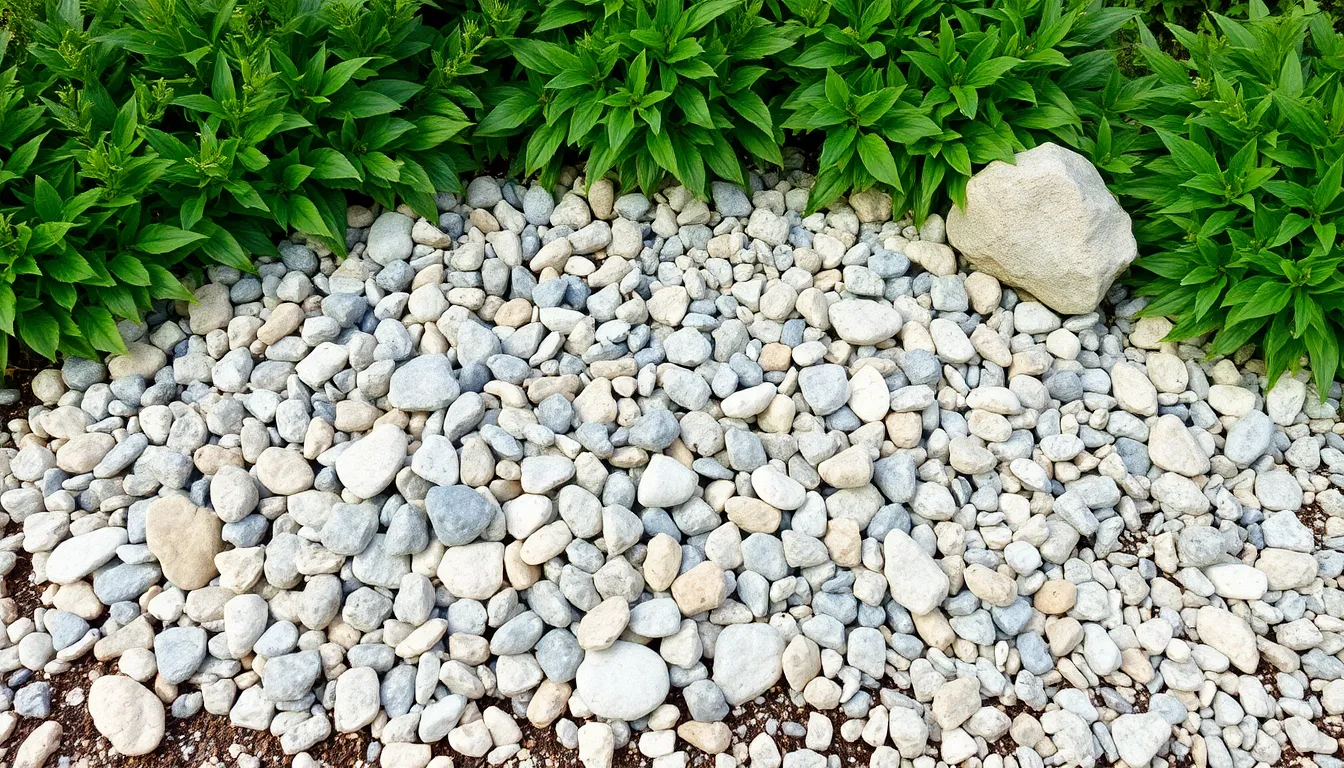When it comes to landscaping, small rocks might just be the unsung heroes of the garden world. These tiny gems can transform any dull outdoor space into a stunning oasis. They’re not just pretty faces; they offer a range of benefits from weed control to water retention. Plus, they’ll never complain about the weather or ask for a raise—talk about low maintenance!
Small Rocks For Landscaping
Small rocks enhance landscapes in meaningful ways. Their versatility offers both practical and aesthetic advantages.
Aesthetic Appeal
Small rocks introduce texture and color to outdoor spaces. Various types, such as river rocks or crushed stones, create visual interest. Incorporating small rocks enhances pathways, garden borders, and decorative beds. Blending different sizes and colors allows for creative design options. Gardeners often use them to complement plants and flowers, adding depth to the landscape. They replace traditional mulches, offering a unique alternative that stands out.
Durability And Longevity
Durability makes small rocks a practical choice for landscapes. Unlike organic materials, they endure weather conditions without breaking down. Small rocks resist fading from UV exposure, maintaining their appearance over time. They require minimal upkeep, reducing the need for regular replacement. By allowing water to flow freely, rocks prevent erosion and control drainage. Landscaping with these materials leads to long-lasting beauty, providing essential benefits without constant intervention.
Types Of Small Rocks

Small rocks come in various forms, each offering unique benefits for landscaping. These options provide textural contrast and functionality in outdoor spaces.
Gravel
Gravel consists of small, loose stones and serves multiple landscaping purposes. Many homeowners use it to create pathways, driveways, or drainage areas. Versatility defines gravel; it comes in various colors, allowing for personalized landscape designs. This material aids in preventing weed growth while enhancing water drainage. With minimal maintenance requirements, gravel remains a practical choice for both decorative and functional uses.
River Rock
River rock features smooth, rounded stones gathered from riverbeds. A common choice for gardens, this rock type adds a natural, aesthetic appeal. River rock provides excellent drainage, making it suitable for flower beds and ponds. Its various sizes create interesting visual layers and enhance the overall landscape design. This option requires little care, allowing for effortless beauty in outdoor spaces.
Granite Chips
Granite chips are small, decorative stones that offer a sleek, polished look. Available in multiple colors, these chips add sophistication to landscapes. Used frequently in flower beds and pathways, granite chips improve drainage and suppress weed growth. Their durability ensures they withstand harsh weather conditions without losing color or integrity. Because of their versatility, granite chips enhance various landscaping styles effectively.
How To Use Small Rocks In Landscaping
Small rocks serve various functions in landscape design. Their versatility allows for a multitude of creative applications.
Ground Cover
Small rocks are ideal for ground cover. They suppress weed growth effectively. Gravel works well in pathways, while river rocks enhance drainage in garden beds. Using smaller stones creates a stable surface that prevents soil erosion. These materials also improve water retention, ensuring plants stay hydrated. Selecting the right type of rock contributes to the overall aesthetic of the landscape. It offers texture and creates a polished look. Incorporating small rocks reduces the need for constant maintenance, allowing for a beautiful, low-effort garden.
Decorative Features
Small rocks add decorative features to outdoor spaces. Utilizing vibrant colors and varied sizes enhances visual interest. Decorative stones accentuate flower beds or outline garden paths. Adding small rocks around water features creates a natural appearance that harmonizes with the environment. They can also be strategically placed to draw attention to focal points in the garden. By using contrasting colors, it’s possible to create striking designs that elevate the landscape. These decorative elements lend character and sophistication, transforming an ordinary garden into a captivating outdoor area.
Maintenance Tips For Small Rock Landscapes
Small rock landscapes require minimal upkeep, yet regular maintenance keeps them looking their best. Adopting effective maintenance strategies enhances their durability and aesthetic appeal.
Weeding Techniques
Preventing weeds remains crucial in maintaining small rock landscapes. Hand-pulling weeds offers a straightforward solution, especially in rocks with gaps. Mulching around rocks can suppress new growth, while applying landscape fabric beneath the rocks helps block weed access. Using a hoe or a specialized weeding tool assists in reaching stubborn weeds in tight spots. Regular inspection ensures early detection, allowing for prompt removal before weeds spread.
Regular Cleaning
Cleaning small rock landscapes periodically enhances their appearance. Rinsing with a garden hose removes dirt and debris that may collect over time. For tough stains, using a power washer cautiously eliminates grime without damaging rocks. Avoid using harsh chemicals, as they can harm surrounding plants. Clearing fallen leaves and organic matter prevents the growth of mold or algae, which can detract from the landscape’s beauty. Implementing this cleaning routine enhances the longevity and visual impact of small rock features.
Conclusion
Small rocks bring a unique charm to landscaping that’s hard to overlook. Their ability to enhance both functionality and aesthetics makes them a go-to choice for many outdoor projects. With various types available, gardeners can find the perfect fit for their specific needs.
From creating stunning pathways to suppressing weeds, small rocks offer endless possibilities for transformation. Proper maintenance ensures these features remain vibrant and effective over time. Embracing small rocks in landscaping not only elevates the visual appeal but also contributes to a sustainable and low-maintenance outdoor space.





